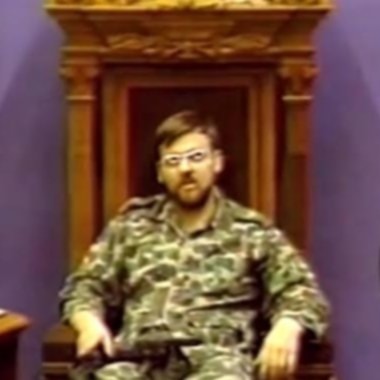
b: 1959
Denis Lortie
Summary
Name:
Years Active:
1984Birth:
March 10, 1959Status:
ReleasedClass:
Mass MurdererVictims:
3Method:
ShootingNationality:
Canada
b: 1959
Denis Lortie
Summary: Mass Murderer
Name:
Denis LortieStatus:
ReleasedVictims:
3Method:
ShootingNationality:
CanadaBirth:
March 10, 1959Years Active:
1984bio
Denis Lortie was born on March 10, 1959, in Quebec. He was the youngest of eight children in his family. Lortie's early life was marked by severe abuse. His father physically and sexually abused all of his children for many years. This abusive behavior created a damaging environment for Lortie and his siblings. In the late 1960s, one of the siblings finally told the police about the abuse. As a result, Lortie's father was sent to federal prison for three years in 1969. When he was released in 1972, he did not return to the family.
After finishing high school in Quebec, Lortie joined the Canadian Forces in the late 1970s. He served in different bases, including CFB Borden, CFB Valcartier, CFB Halifax, and CFS Carp. Lortie was a member of the Logistics Branch and worked as a supply technician. On December 27, 1980, he married Lisa Lévesque in Quebec City. The couple had two children, a son born in 1982 and a daughter born in 1983.
Lortie was bilingual and spoke both French and English. However, he had trouble pronouncing some English words. This made him feel insecure about his ability to communicate. He thought his speech issues contributed to his social and work failures. He felt that his struggles reinforced negative stereotypes about French-speaking Canadians. After the birth of his daughter, Lortie began to worry that he might become abusive like his father. This fear led him to think about harming himself and his family. He also blamed political issues on his problems, specifically against the Parti Québécois, which promoted a Francophone identity for Quebec.
murder story
On May 8, 1984, Denis Lortie entered the Parliament Building in Quebec City at 9:45 a.m. He was dressed in military combat uniform and armed with two C-1 submachine guns, an Inglis pistol, and a knife. He was carrying a duffel bag filled with four hundred rounds of ammunition. Upon entering, he shot and mortally wounded a receptionist and then killed a messenger in a corridor. Lortie proceeded into a smoking room and shot a person there, before moving on to the cafeteria.
His main goal was to attack government leaders, particularly Premier René Lévesque and other members of the Parti Québécois. Lortie's plan involved entering the Assembly Chamber during a parliamentary committee meeting that was scheduled for 10:00 a.m. that morning. However, he had miscalculated the timing, as the host of a local radio program, André Arthur, ended his broadcast twenty minutes early. This allowed Lortie to access the Chamber while it was mostly empty.
Inside the Assembly Chamber, Lortie opened fire on the government employees still present. In total, he killed three people and wounded thirteen others before a standoff began. The National Assembly's sergeant-at-arms, René Jalbert, responded to the situation. He stepped out of an elevator and confronted Lortie. After a tense exchange, Jalbert was able to persuade Lortie to come into his office for a discussion, which helped to release the civilians held in the Chamber.
Lortie and Jalbert talked for over four hours. Eventually, Jalbert convinced Lortie to surrender to military police. At 2:15 p.m., Lortie surrendered to authorities without further violence. Jalbert received recognition for his bravery later on.
The shooting resulted in the deaths of Georges Boyer, Camille Lepage, and Roger Lefrançois. Following the incident, a psychiatrist diagnosed Lortie with paranoid schizophrenia, stating that he believed he was acting on orders from God. Initially convicted of first-degree murder in 1985, Lortie's conviction was overturned. In 1987, he pleaded guilty to reduced charges of second-degree murder.
Lortie served part of his sentence in a minimum-security facility. He was released on day parole in 1995 and granted full parole in 1996. As of 2007, he was reported to be living a stable life, married with a job, and compliant with the conditions of his parole.